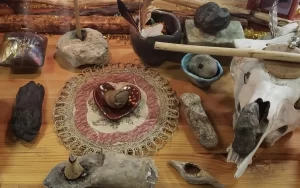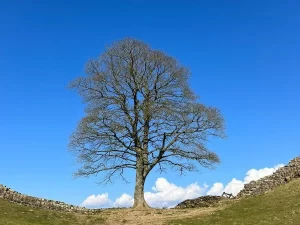We all have a contra-sexual inner partner in our unconscious psyches. Carl Jung called this the animus in women and the anima in men. Jungian analyst Marion Woodman referred to them as inner masculine and inner feminine.
“The Hindus say that without Shakti, the personified feminine life force, Shiva, who encompasses the masculine ability to act, becomes a corpse. She is the life energy that animates the male principle, and the male principle in turn animates action in the world.” Clarissa Pinkola Este
In the Chinese yin and yang symbols, there is a small amount of yin in the yang and yang in the yin, which also refers to these inner opposites that we all have. If you do not feel comfortable naming these aspects of the self in terms of gender, you can feel their different energy and functions merely as opposites. The inner masculine, animus or yang is assertive and dynamic, hot and energetic like the sun and it initiates action while the yin or inner feminine is more like a receptacle that receives life as it gestates like a dark, earthy cave or womb. Its energy is inward looking, ‘for it is essentially concerned with gestation, giving form to the energy of yang, and bringing life out of darkness.” (1) Archetype Revisited: An Updated Natural History of the Self by Anthony Stevens
These inner partners have a strong influence on our lives, even if we are not conscious of their presence. They are autonomous, not something we have control over. The problem with building a conscious relationship with them is that they live out their existence in our shadow, in the unconscious. We can neither ‘see’ them or ‘perceive’ them directly. There is nothing to look straight at, because we are unconscious of our unconscious.
We can get to know our inner opposites through dreams, and also by becoming aware of what parts of ourselves we project onto people of the opposite sex. This takes time and practice at first, as we are so used to being blissfully unaware of these inner partners.
If you are a woman, pay attention to the men in your dreams, their character, how you feel about and relate to them and what they are doing. All this information will help you to understand a current aspect of your inner masculine or animus. If you write down your dreams, you will see the life of and your relation to your inner masculine changes and evolves over time. He is not stationary or fixed, he develops through life as we do.
Another way of seeing some of the core character traits of your inner masculine is to write down every male you have had a relationship with, even the shortest relationship, since you first started dating as a young woman. Tune into each of them and remember what it was that you were initially attracted to. As we project much more purely onto someone we don’t know very well, it is these first attractions that mirror aspects of our inner masculine most honestly. When you have finished writing them down, notice any recurring themes or traits of character. These will highlight core attributes of your own inner masculine.
You can also think about your favorite male character in a novel, in a film, or a public figure, like a politician, musician or athlete that you find yourself attracted to. What is it that attracts you to these men? What are the attributes you look for in a male partner? All these things give you clues about your animus or inner masculine. Men can do the same exercise with women in their dreams and in their lives, which can be looked at in terms of the inner feminine or anima.
We unconsciously project our inner feminine or masculine outwards onto people of the opposite sex in our lives and in the world, which is one of the ways in which we can learn to perceive them. Notice how you feel about people of the opposite sex in your lives, especially if the emotions are intense in some way. Reel in these feelings and instead of blaming the other person for something or putting them on a pedestal, try analyzing what they are doing to trigger these deep emotions within you. Ask yourself, how this trait of character or action may be a projection of a part of your animus or anima.
This is a difficult concept to grasp and integrate and it takes time and perseverance to really become aware of the different aspects that make up your inner masculine or feminine, because they reside in the unconscious. This part of the psyche lives out its life on the frontier between the personal and collective unconscious.
The collective unconscious contains the archetype. We all have a mother and a father. An egg and a sperm are needed each of us to exist and multiply. All our lineages have come about through generation after generation of mother lines and father lines.
The personal unconscious is where the archetype comes though and expresses itself in each individual’s story. I am proposing that the inner masculine and feminine develop and are influenced by our mother lines. The relationships that our mothers, grandmothers, great-grandmothers and further female ancestors had with men (their fathers, brothers and partners) have a huge effect on our own inner masculine and how we relate to him. It also shapes men’s inner feminine and how they relate to her. Our fathers had a relationship with our mothers. This relationship is the most recent relationship that influences our inner masculine or feminine and how we relate to them. The father brings to this relationship his own inner feminine that has been influenced by his mother line, which is his child’s father line.
For a long time, I knew on an intellectual level that I had an inner masculine. I caught glances of him through my dreams and relationships, but I found perceiving him and building a tangible relationship with this autonomous shadow part of my psyche very elusive.
When I married my twin flame, Florian, I was 50 years old and through my outer projections onto him, my inner masculine began to become more real. The relationship we have with our inner masculine or feminine, even if we are not yet conscious of it, is mirrored in our relationships with people of the opposite sex. Even non-heterosexuals will experience a mirroring of their inner relationship with their contra-sexual partner with people of the opposite sex such as friends, parents, mentors, colleagues, etc.
In a solid, committed relationship where the vessel that both partners have created together to hold the relationship is strong enough (meaning that the love and commitment is stronger than the problems that will arise), we can learn through the problems that arise to take responsibility for our own projections and to look at how this outer relationship is mirroring our inner one. During these difficulties, we are given a gift of seeing how we relate to our inner masculine. Only when we bring this inner relationship to consciousness, can we stop it from having a destructive effect on our outer relationships.
A woman’s inner man, her animus, is strongly colored by the experience that the women in her mother line had with their father’s and partners. The psychological relationship is learnt and passed down through the generations. Common traits and behaviors of these men are internalized and influence her inner masculine. They come through her unconscious mind, her spirit and mental body.
“The animus is the deposit, as it were, of all woman’s ancestral experiences of man–and not only that, he is also a creative and procreative being.” -C.G. Jung
As we have seen, the mother line resonates in the body through each member and each generation by the means of the mitochondrial DNA, which acts like a surname. Our soul weaves its way through this embodied experience of life, deeply and profoundly harbored in this very feminine sense of belonging. When I tune into my ancestral lines, it is with the mother line that I feel the continuity, the incarnated soulfulness that influences, supports, and guides my existence. Through my blood, my mtDNA, I am grounded within a people and their story, a lineage and its roots. Through my body, I belong and am animated by my ancestral clan.
A man finds his soul through his soil: The mothers in his mother line and the way they relate to men (their fathers and partners) influence and form the characters and behaviors that come through the archetype of his inner feminine.
The inner feminine in men is often experienced as a single woman, the ‘she’ that is embodied through the mtDNA and that is in his mother, his grandmother, great-grandmother, great-great-grandmother and so on for thousands of years. Whereas the inner masculine in women is influenced not by earthly embodiment of the feminine, but through the masculine relationships that impregnate and behold the feminine. She is sculpted by the ‘eyes’ of spirit, the way she is seen and beheld by each generation of men that enter into the dance of life with her imprints, another male figure into this complex myriad of characters that make up her inner masculine.
“The anima and animus draw their power especially from the collective unconscious, but they are also conditioned by a person’s individual experiences…Jung said that the animus is more likely to be personified by multiple male figures, while the anima is frequently a single female.” Eric Neumann
We inherit the wounds of the ancestral relationships between the feminine receptacle and the masculine spirit that we inherit through our mother line. They reside within us and we play them out in the world.
“The true feminine is the receptacle of love. The true masculine is the spirit that goes into the eternal unknown in search of meaning. The great container, the Self, is paradoxically both male and female and contains both. If these are projected onto the outside world, transcendence ceases to exist. The Self—the inner wholeness—is petrified. Without the true masculine spirit and the true feminine love within, no inner life exists…. To be free is to break the stone images and allow life and love to flow.” Marion Woodman, Addiction to Perfection: The Still Unravished Bride
In order to find a harmony within, a sacred union between these opposites that we all carry, we must be ready to change our perspective. Instead of looking outwards and believing our projections, we need to own them and see how they are a mere reflection of what is going on in our inner relationship. Heal the inner relationship and we heal the outer ones. Blame our partners, friends, colleagues and we will carry on being confronted with the same problem in the same relationship or in different relationships until we bring our inner masculine (animus) or inner feminine (anima) and our inner relationship to this part of ourselves into the light.
This blog posts comes from my notes and reflections that will eventually become my book ”The Way Back Home: Reconnecting with our Ancestral Clan.”
share this blog:
Recent Posts
Archives
- December 2023
- November 2023
- September 2022
- July 2022
- September 2021
- August 2021
- July 2021
- June 2021
- April 2021
- March 2021
- February 2021
- January 2021
- November 2020
- October 2020
- August 2020
- July 2020
- June 2020
- May 2020
- April 2020
- March 2020
- February 2020
- October 2019
- September 2019
- July 2019
- May 2019
- March 2019
- September 2018





